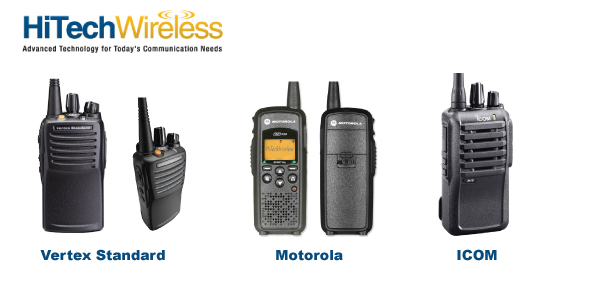Ways Two-Way Radios Help Workers Stay Safe
Posted by Administrator on 2nd Feb 2014

Productivity and increased sales are undeniably important in business and industry, but worker safety is a key issue that also needs to be addressed and planned for in advance. Public safety workers and military personnel encounter life-threatening situations on a day-to-day, often moment-to-moment basis. When things go wrong, critical communication should be only seconds or minutes away; two-way radios offer that crucial means of communication, even when a downed worker can’t communicate for himself. It isn't only the public safety sector or the military that encounter potential physical risk to personnel; any business or institution populated by people -- hotels, grocery and retail stores, restaurants and schools -- must have a system in place for keeping workers, students and visitors, or customers safe. Two-way radios are an excellent safety net for the workforce; HiTech Wireless offers two-way radios with a host of features designed with worker safety in mind, while at the same time providing virtually seamless communication.
Safety First
Outfitting workers with state-of-the-art technology via two-way radios saves money in the long run. Pinpoint the location of employees with precision so that every worker is accounted for, even in the most hazardous environments and situations. It would be ideal if all accidents or problems could be avoided, but circumstances crop up, and, when they do, your company's employees will be ready for nearly any eventuality.
Two-Way Radio Features and Safety Solutions
The Lone Worker or Man Down features are an incredible asset to worker safety. If you have personnel working in remote or perilous locations, or, in the case of police and military, taking part in risky situations, then the Man Down feature serves as an ingenious protection when a problem occurs. Settings for these features can be adjusted on two-way radios to fit any environment. Here's how they work:
- A worker must reset a built-in timer that has been adjusted to a fixed interval on the two-way radio. If for some reason, the worker does not, or is unable to, reset the timer then the Lone Worker feature initiates an emergency alert that starts the chain of action for providing the worker with help.
- The Man Down feature, on the other hand, is based on a prolonged lack of motion of the two-way radio outfitted with this feature. During this event, an alert sounds, first giving the radio user a chance to pick up the radio and respond. If, however, the worker is injured or unconscious and can't respond, then an alarm is triggered at various predetermined sites throughout the radio network.
Communicating information concerning hazardous conditions can stop accidents and mishaps before they occur. In warehouses and manufacturing plants, workers use two-radios to quickly point out problems with machinery, dropped crates, or dangerous spills. Changes in the weather can be disastrous in certain locales and jeopardize worker safety. Use two-way radios to instantly update workers on any changes in traffic, weather, accidents has the potential to save lives.
GPS technology available on some two-way radios gives instantaneous coordinates of workers or their vehicles for tracking purposes.
The broadcasting of an emergency message is another safety feature that would work well for manning security or monitoring attendee-activity at crowded concerts or conventions. In the event of a fire or a riot during a rock concert, for instance, an emergency broadcast sent to everyone holding a two-way radio can make all the difference in keeping crowds of people safe.
Keep Your Two-Way Radios Operational
Two-way radios afford protection for workers but only if they're in top working order: fully charged and ready to go. HiTech Wireless carries rugged two-way radios to fit any workforce situation, as well as rechargeable batteries and rapid-rate chargers for the desktop or vehicle. Worker and customer safety should be priority number one. Fortunately, two-way radios assist workers in staying as safe as humanly possible.
